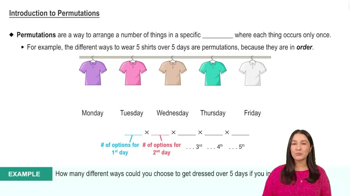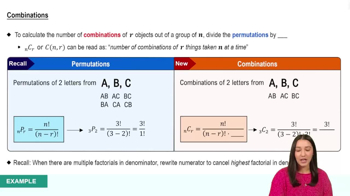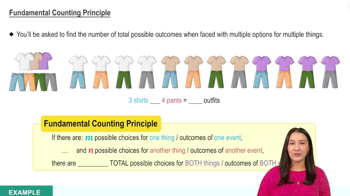Here are the essential concepts you must grasp in order to answer the question correctly.
Permutations
Permutations refer to the different ways in which a set of items can be arranged or ordered. In this context, the eight skaters can finish in various sequences, and the total number of unique arrangements is calculated using the factorial of the number of items, denoted as n!. For example, if there are 3 skaters, the number of finishing orders would be 3! = 6.
Recommended video:
Introduction to Permutations
Factorial
The factorial of a non-negative integer n, denoted as n!, is the product of all positive integers up to n. It is a fundamental concept in combinatorics used to determine the number of ways to arrange n distinct objects. For instance, 5! = 5 × 4 × 3 × 2 × 1 = 120, which represents the number of ways to arrange 5 skaters.
Recommended video:
Combinatorial Counting
Combinatorial counting involves techniques for counting the arrangements or selections of items in a set. In the case of the skating race, since the order of finish matters and there are no ties, we use permutations to count the possible outcomes. Understanding this concept is crucial for solving problems related to arrangements and sequences in statistics.
Recommended video:
Fundamental Counting Principle
 Verified step by step guidance
Verified step by step guidance Verified video answer for a similar problem:
Verified video answer for a similar problem:



 7:11m
7:11m